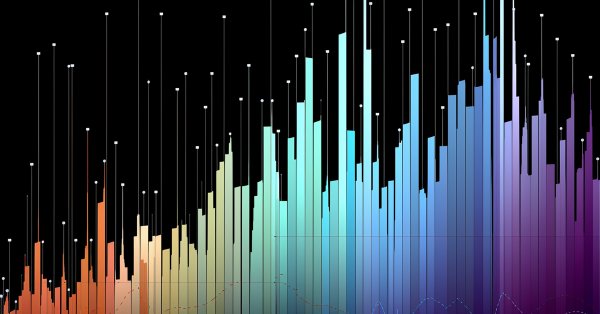

Trading account monitoring is an indispensable trader's tool
Trading account monitoring provides a detailed report on all completed deals. All trading statistics are collected automatically and provided to you as easy-to-understand diagrams and graphs.

How to conduct a qualitative analysis of trading signals and select the best of them
The article deals with evaluating the performance of Signals Providers. We offer several additional parameters highlighting signal trading results from a slightly different angle than in traditional approaches. The concepts of the proper management and perfect deal are described. We also dwell on the optimal selection using the obtained results and compiling the portfolio of multiple signal sources.


MQL5: Analysis and Processing of Commodity Futures Trading Commission (CFTC) Reports in MetaTrader 5
In this article, we will develop a tool for CFTC report analysis. We will solve the following problem: to develop an indicator, that allows using the CFTC report data directly from the data files provided by Commission without an intermediate processing and conversion. Further, it can be used for the different purposes: to plot the data as an indicator, to proceed with the data in the other indicators, in the scripts for the automated analysis, in the Expert Advisors for the use in the trading strategies.

How to build and test a Binary Options strategy with the MetaTrader 4 Strategy Tester
Tutorial to build a Binary Options strategy an test it in Strategy-Tester of MetaTrader 4 with Binary-Options-Strategy-Tester utility from marketplace.


Using Self-Organizing Feature Maps (Kohonen Maps) in MetaTrader 5
One of the most interesting aspects of Self-Organizing Feature Maps (Kohonen maps) is that they learn to classify data without supervision. In its basic form it produces a similarity map of input data (clustering). The SOM maps can be used for classification and visualizing of high-dimensional data. In this article we will consider several simple applications of Kohonen maps.

Statistical Distributions in MQL5 - taking the best of R and making it faster
The functions for working with the basic statistical distributions implemented in the R language are considered. Those include the Cauchy, Weibull, normal, log-normal, logistic, exponential, uniform, gamma distributions, the central and noncentral beta, chi-squared, Fisher's F-distribution, Student's t-distribution, as well as the discrete binomial and negative binomial distributions, geometric, hypergeometric and Poisson distributions. There are functions for calculating theoretical moments of distributions, which allow to evaluate the degree of conformity of the real distribution to the modeled one.


MetaTrader 5 and Python integration: receiving and sending data
Comprehensive data processing requires extensive tools and is often beyond the sandbox of one single application. Specialized programming languages are used for processing and analyzing data, statistics and machine learning. One of the leading programming languages for data processing is Python. The article provides a description of how to connect MetaTrader 5 and Python using sockets, as well as how to receive quotes via the terminal API.


Analyzing Candlestick Patterns
Construction of Japanese candlestick chart and analysis of candlestick patterns constitute an amazing area of technical analysis. The advantage of candlesticks is that they represent data in such a manner that you can track the dynamics inside the data. In this article we analyze candlestick types, classification of candlestick patterns and present an indicator that can determine candlestick patterns.

Forecasting market movements using the Bayesian classification and indicators based on Singular Spectrum Analysis
The article considers the ideology and methodology of building a recommendatory system for time-efficient trading by combining the capabilities of forecasting with the singular spectrum analysis (SSA) and important machine learning method on the basis of Bayes' Theorem.

How to make $1,000,000 off algorithmic trading? Use MQL5.com services!
All traders visit the market with the goal of earning their first million dollars. How to do that without excessive risk and start-up budget? MQL5 services provide such opportunity for developers and traders from around the world.


A New Approach to Interpreting Classic and Hidden Divergence
The article considers the classic method for divergence construction and provides an additional divergence interpretation method. A trading strategy was developed based on this new interpretation method. This strategy is also described in the article.


Portfolio trading in MetaTrader 4
The article reveals the portfolio trading principles and their application to Forex market. A few simple mathematical portfolio arrangement models are considered. The article contains examples of practical implementation of the portfolio trading in MetaTrader 4: portfolio indicator and Expert Advisor for semi-automated trading. The elements of trading strategies, as well as their advantages and pitfalls are described.


Third Generation Neural Networks: Deep Networks
This article is dedicated to a new and perspective direction in machine learning - deep learning or, to be precise, deep neural networks. This is a brief review of second generation neural networks, the architecture of their connections and main types, methods and rules of learning and their main disadvantages followed by the history of the third generation neural network development, their main types, peculiarities and training methods. Conducted are practical experiments on building and training a deep neural network initiated by the weights of a stacked autoencoder with real data. All the stages from selecting input data to metric derivation are discussed in detail. The last part of the article contains a software implementation of a deep neural network in an Expert Advisor with a built-in indicator based on MQL4/R.


What the Numbers in the Expert Testing Report Mean
Article explains how to read testing reports and to interpret the obtained results properly.


The Price Histogram (Market Profile) and its implementation in MQL5
The Market Profile was developed by trully brilliant thinker Peter Steidlmayer. He suggested to use the alternative representation of information about "horizontal" and "vertical" market movements that leads to completely different set of models. He assumed that there is an underlying pulse of the market or a fundamental pattern called the cycle of equilibrium and disequilibrium. In this article I will consider Price Histogram — a simplified model of Market Profile, and will describe its implementation in MQL5.


How to reduce trader's risks
Trading in financial markets is associated with a whole range of risks that should be taken into account in the algorithms of trading systems. Reducing such risks is the most important task to make a profit when trading.

Neural Networks Made Easy
Artificial intelligence is often associated with something fantastically complex and incomprehensible. At the same time, artificial intelligence is increasingly mentioned in everyday life. News about achievements related to the use of neural networks often appear in different media. The purpose of this article is to show that anyone can easily create a neural network and use the AI achievements in trading.


Introduction to the Empirical Mode Decomposition Method
This article serves to familiarize the reader with the empirical mode decomposition (EMD) method. It is the fundamental part of the Hilbert–Huang transform and is intended for analyzing data from nonstationary and nonlinear processes. This article also features a possible software implementation of this method along with a brief consideration of its peculiarities and gives some simple examples of its use.


Using Neural Networks In MetaTrader
This article shows you how to easily use Neural Networks in your MQL4 code taking advantage of best freely available artificial neural network library (FANN) employing multiple neural networks in your code.


100 best optimization passes (part 1). Developing optimization analyzer
The article dwells on the development of an application for selecting the best optimization passes using several possible options. The application is able to sort out the optimization results by a variety of factors. Optimization passes are always written to a database, therefore you can always select new robot parameters without re-optimization. Besides, you are able to see all optimization passes on a single chart, calculate parametric VaR ratios and build the graph of the normal distribution of passes and trading results of a certain ratio set. Besides, the graphs of some calculated ratios are built dynamically beginning with the optimization start (or from a selected date to another selected date).


Comparing different types of moving averages in trading
This article deals with seven types of moving averages (MA) and a trading strategy to work with them. We also test and compare various MAs at a single trading strategy and evaluate the efficiency of each moving average compared to others.


Self-optimization of EA: Evolutionary and genetic algorithms
This article covers the main principles set fourth in evolutionary algorithms, their variety and features. We will conduct an experiment with a simple Expert Advisor used as an example to show how our trading system benefits from optimization. We will consider software programs that implement genetic, evolutionary and other types of optimization, and provide examples of application when optimizing a predictor set and parameters of the trading system.

An Introduction to Fuzzy Logic
Fuzzy logic expands our boundaries of mathematical logic and set theory. This article reveals the basic principles of fuzzy logic as well as describes two fuzzy inference systems using Mamdani-type and Sugeno-type models. The examples provided will describe implementation of fuzzy models based on these two systems using the FuzzyNet library for MQL5.

SQLite: Native handling of SQL databases in MQL5
The development of trading strategies is associated with handling large amounts of data. Now, you are able to work with databases using SQL queries based on SQLite directly in MQL5. An important feature of this engine is that the entire database is placed in a single file located on a user's PC.


Night trading during the Asian session: How to stay profitable
The article deals with the concept of night trading, as well as trading strategies and their implementation in MQL5. We perform tests and make appropriate conclusions.


The Easy Way to Evaluate a Signal: Trading Activity, Drawdown/Load and MFE/MAE Distribution Charts
Subscribers often search for an appropriate signal by analyzing the total growth on the signal provider's account, which is not a bad idea. However, it is also important to analyze potential risks of a particular trading strategy. In this article we will show a simple and efficient way to evaluate a Trading Signal based on its performance values.


Limitless Opportunities with MetaTrader 5 and MQL5
In this article, I would like to give an example of what a trader's program can be like as well as what results can be achieved in 9 months, having started to learn MQL5 from scratch. This example will also show how multi-functional and informative such a program can be for a trader while taking minimum space on the price chart. And we will be able to see just how colorful, bright and intuitively clear to the user trade information panels can get. As well as many other features...


Deep neural network with Stacked RBM. Self-training, self-control
This article is a continuation of previous articles on deep neural network and predictor selection. Here we will cover features of a neural network initiated by Stacked RBM, and its implementation in the "darch" package.

Money Management by Vince. Implementation as a module for MQL5 Wizard
The article is based on 'The Mathematics of Money Management' by Ralph Vince. It provides the description of empirical and parametric methods used for finding the optimal size of a trading lot. Also the article features implementation of trading modules for the MQL5 Wizard based on these methods.


Creating a Multi-Currency Multi-System Expert Advisor
The article introduces a structure for an Expert Advisor that trades multiple symbols and uses several trading systems simultaneously. If you already identified the optimal input parameters for all your EAs and got good backtesting results for each of them separately, ask yourself what results you would get if testing all EAs simultaneously, with all your strategies put together.

Library for easy and quick development of MetaTrader programs (part XXII): Trading classes - Base trading class, verification of limitations
In this article, we will start the development of the library base trading class and add the initial verification of permissions to conduct trading operations to its first version. Besides, we will slightly expand the features and content of the base trading class.


Applying The Fisher Transform and Inverse Fisher Transform to Markets Analysis in MetaTrader 5
We now know that probability density function (PDF) of a market cycle does not remind a Gaussian but rather a PDF of a sine wave and most of the indicators assume that the market cycle PDF is Gaussian we need a way to "correct" that. The solution is to use Fisher Transform. The Fisher transform changes PDF of any waveform to approximately Gaussian. This article describes the mathematics behind the Fisher Transform and the Inverse Fisher Transform and their application to trading. A proprietary trading signal module based on the Inverse Fisher Transform is presented and evaluated.

Library for easy and quick development of MetaTrader programs (part XXX): Pending trading requests - managing request objects
In the previous article, we have created the classes of pending request objects corresponding to the general concept of library objects. This time, we are going to deal with the class allowing the management of pending request objects.

Timeseries in DoEasy library (part 43): Classes of indicator buffer objects
The article considers the development of indicator buffer object classes as descendants of the abstract buffer object simplifying declaration and working with indicator buffers, while creating custom indicator programs based on DoEasy library.

How to create 3D graphics using DirectX in MetaTrader 5
3D graphics provide excellent means for analyzing huge amounts of data as they enable the visualization of hidden patterns. These tasks can be solved directly in MQL5, while DireсtX functions allow creating three-dimensional object. Thus, it is even possible to create programs of any complexity, even 3D games for MetaTrader 5. Start learning 3D graphics by drawing simple three-dimensional shapes.


Statistical Verification of the Labouchere Money Management System
In this article, we test the statistical properties of the Labouchere money management system. It is considered to be a less aggressive kind of Martingale, since bets are not doubled, but are raised by a certain amount instead.


Applying fuzzy logic in trading by means of MQL4
The article deals with examples of applying fuzzy set theory in trading by means of MQL4. The use of FuzzyNet library for MQL4 in the development of an indicator and an Expert Advisor is described as well.


Strategy Tester: Modes of Modeling during Testing
Many programs of technical analysis allow to test trading strategies on history data. In the most cases, the testing is conducted on already completed data without any attempts to model the trends within a price bar. It was made quickly, but not precisely


Creating Custom Criteria of Optimization of Expert Advisors
The MetaTrader 5 Client Terminal offers a wide range of opportunities for optimization of Expert Advisor parameters. In addition to the optimization criteria included in the strategy tester, developers are given the opportunity of creating their own criteria. This leads to an almost limitless number of possibilities of testing and optimizing of Expert Advisors. The article describes practical ways of creating such criteria - both complex and simple ones.


Time Series Forecasting Using Exponential Smoothing
The article familiarizes the reader with exponential smoothing models used for short-term forecasting of time series. In addition, it touches upon the issues related to optimization and estimation of the forecast results and provides a few examples of scripts and indicators. This article will be useful as a first acquaintance with principles of forecasting on the basis of exponential smoothing models.